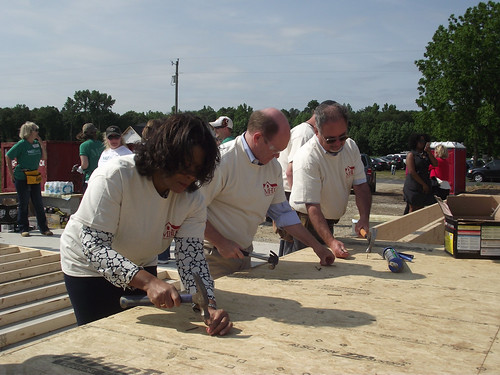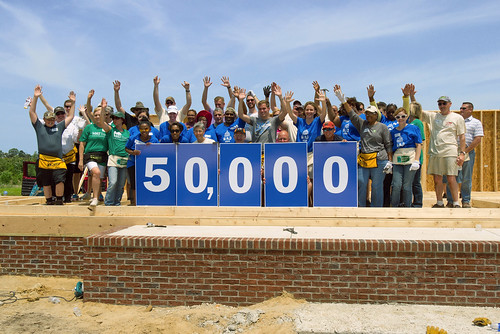
I wake up every day excited to work for an agency that gives rural American families three intangible gifts through homeownership: hope, surprise and joy.
They experience a sense of hope when they find there are affordable options to become homeowners. They surprise themselves by doing the incredible amount of work it takes to literally build the dream, and they experience unbounded joy when they move into their own home.
Earlier this month, USDA Rural Development’s Acting Deputy Under Secretary Vernita Dore, U.S. Senator Chris Coons and staff from USDA’s national office and the Delaware-Maryland State Rural Development office were joined by Capitol Hill staff representing congressional districts from multiple States in support of families working to build a better future for themselves in Bridgeville, Delaware.
I hammered nails and lifted walls alongside some of the most inspirational people I’ve ever met. There were families who were dedicating all of their free time to building each other’s houses; there were folks from Milford Housing Development Corporation (MHDC) who have dedicated their careers to bettering the lives of their neighbors. Interns pushed and pulled alongside senior executives from USDA. Volunteer workers began as strangers but quickly became friends. As walls were framed, friendships forged.
The millions of homeowners assisted through USDA programs ensure rural America remains a vital and prosperous place to live, work and raise a family. Our partners keep the programs alive and thriving. Just as one person cannot lift an entire wall alone, USDA would not have helped 50,000 families help themselves without the aid of the dedicated organizations we work alongside.
Just as the title says, this is a program where the borrowers are helping themselves. On average, each family contributes about 1,500 hours of labor to build not only their own home, but the homes of the other families who are enrolled in the program. In Delaware, these hours add up to about $33,000 in sweat equity. That’s a sizable sum when you consider that the average income of participants in the program is under $28,000. Organizations like MHDC supervise groups of very-low- and low-income individuals and families as they construct their own homes. The families provide most of the labor on each other's homes.
By working with trusted local organizations, USDA’s Mutual Self-Help Program helps prospective homeowners find hope for a better future, pleasantly surprise themselves with how much they are capable of doing in order to achieve the American dream of homeownership, and experience the joy of moving into a home they helped build.

